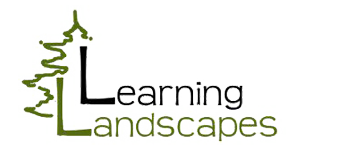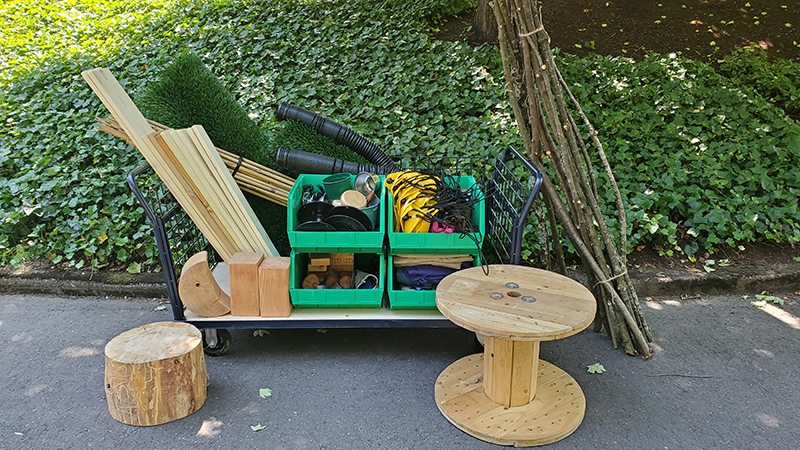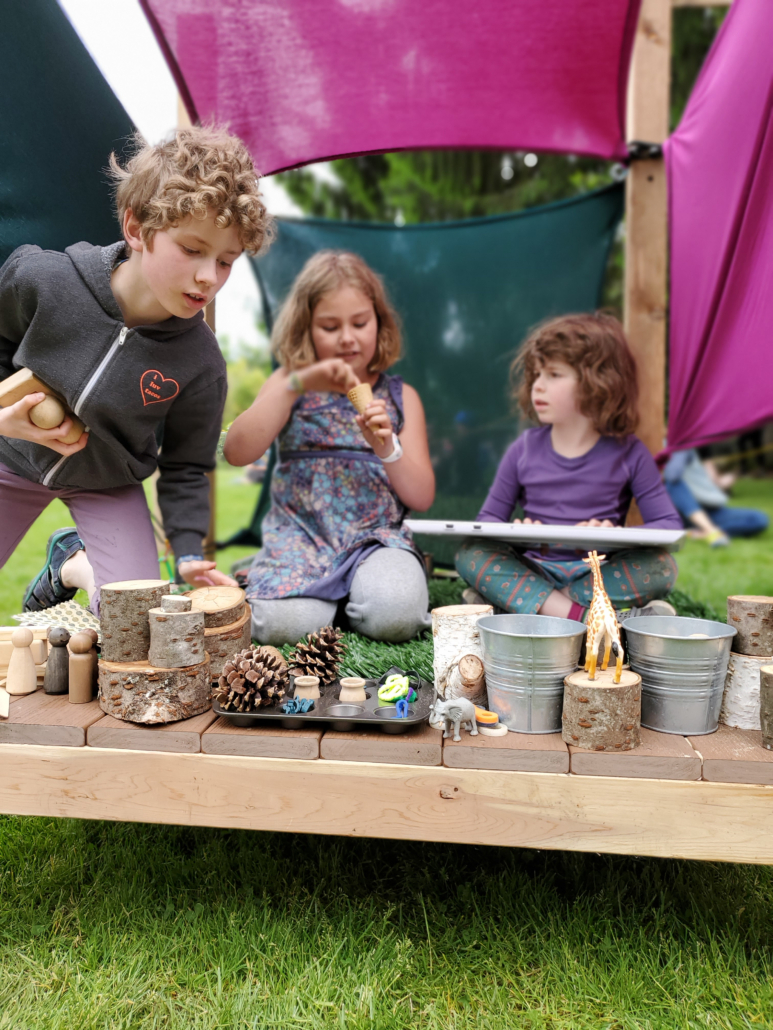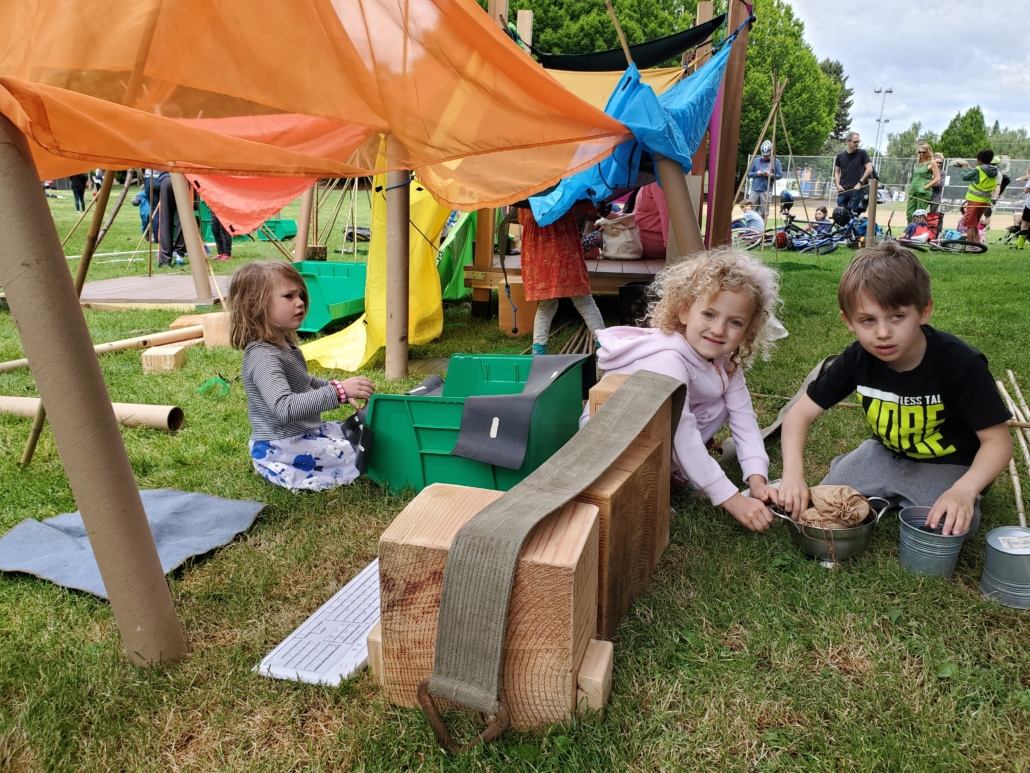Playground development and redevelopment can seem like a daunting task. Loose parts play at schools can be a viable solution for many of the trickier parts of playground development. Site design can be involved and equipment costs high. There are lots of voices at the table district staff, facilities staff, teachers, PTA and others. The timeline to see real physical change can be longer then some communities want to wait.
Loose parts play is a quick and relatively easy way to engage your students in high quality play without all the plannting and approval work! Check out the quick video below where we introduce a small loose parts kit to 3 classes of kindergarten students. They were begging for us to return the next day.
Before implementing loose parts play at schools, consider what types of elements to offer. Their size and weight can affect how they are used. A typical rule of thumb is offer 4-7 ‘loose pieces’ per student. Considering how pieces will get brought onto and off of the playground is important. Higher value elements should be stored indoors or in a shed. Lower value sticks, rocks, sand, or tree cookies might be able to stay on site all the time.
Loose parts can also be added to a space to meet learning and curriculum goals. Chalk is a simple idea for writing practice and early mark making. Magnifying glasses, tweezers, and seeds make for a great ecology lesson. Yard sticks, rolling wheels, and scales turn measurement into a fun experience.
Students are drawn to explore and play. If the right loose parts are presented learning will come from the student!
To learn more about loose parts see our blog series on loose parts.






